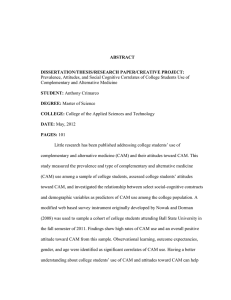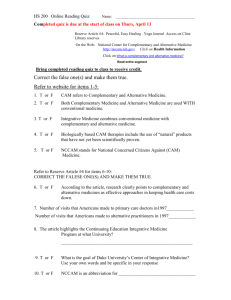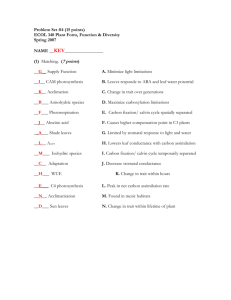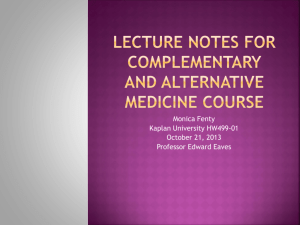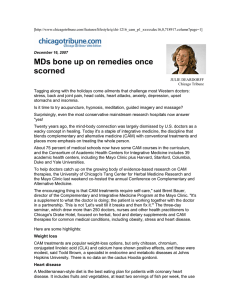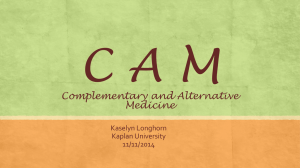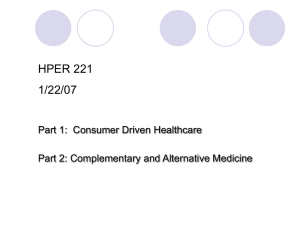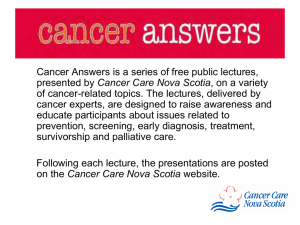CAM 101-1 Notes - MyLife4Wellness
advertisement
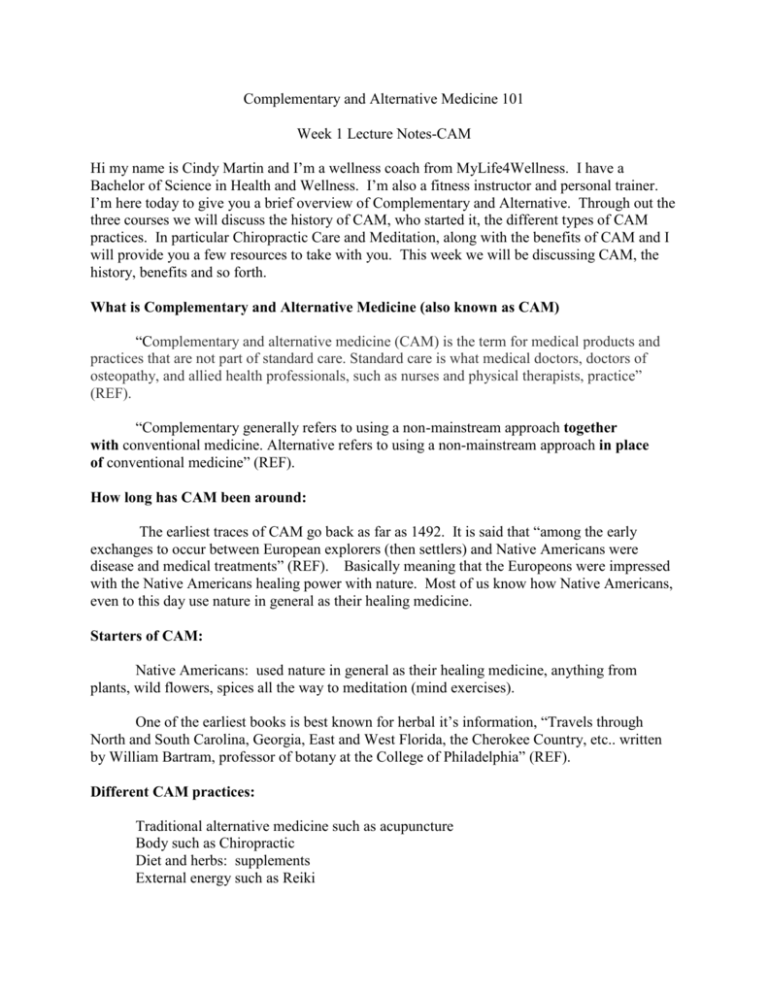
Complementary and Alternative Medicine 101 Week 1 Lecture Notes-CAM Hi my name is Cindy Martin and I’m a wellness coach from MyLife4Wellness. I have a Bachelor of Science in Health and Wellness. I’m also a fitness instructor and personal trainer. I’m here today to give you a brief overview of Complementary and Alternative. Through out the three courses we will discuss the history of CAM, who started it, the different types of CAM practices. In particular Chiropractic Care and Meditation, along with the benefits of CAM and I will provide you a few resources to take with you. This week we will be discussing CAM, the history, benefits and so forth. What is Complementary and Alternative Medicine (also known as CAM) “Complementary and alternative medicine (CAM) is the term for medical products and practices that are not part of standard care. Standard care is what medical doctors, doctors of osteopathy, and allied health professionals, such as nurses and physical therapists, practice” (REF). “Complementary generally refers to using a non-mainstream approach together with conventional medicine. Alternative refers to using a non-mainstream approach in place of conventional medicine” (REF). How long has CAM been around: The earliest traces of CAM go back as far as 1492. It is said that “among the early exchanges to occur between European explorers (then settlers) and Native Americans were disease and medical treatments” (REF). Basically meaning that the Europeons were impressed with the Native Americans healing power with nature. Most of us know how Native Americans, even to this day use nature in general as their healing medicine. Starters of CAM: Native Americans: used nature in general as their healing medicine, anything from plants, wild flowers, spices all the way to meditation (mind exercises). One of the earliest books is best known for herbal it’s information, “Travels through North and South Carolina, Georgia, East and West Florida, the Cherokee Country, etc.. written by William Bartram, professor of botany at the College of Philadelphia” (REF). Different CAM practices: Traditional alternative medicine such as acupuncture Body such as Chiropractic Diet and herbs: supplements External energy such as Reiki Mind as in meditation Senses meaning art, dance and music (REF) Pros and Cons of CAM: Pros: stress reduction, general wellness, and low cost Cons: insurance hassles and health risks Articles on CAM: Perspectives on Complementary and Alternative Medicine Research http://jama.jamanetwork.com/article.aspx?articleid=1730519 Attitude and practice of patients and doctors towards complementary and alternative medicine. http://www.ncbi.nlm.nih.gov/pubmed/23862273?tool=MedlinePlus Study shows the public is turning to alternative medicine and away from dangerous prescription drugs http://www.naturalnews.com/019352_alternative_medicine_dangerous_drugs.html#ixzz2 n6801GFn Video: https://www.youtube.com/watch?v=zPgUiBPp9mY


